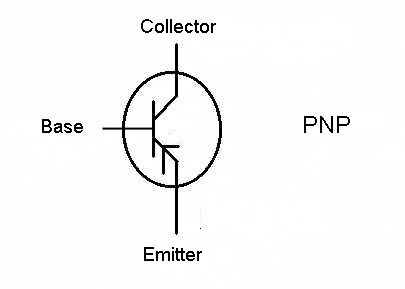R
rdean
Guest
While discussing the dangers of moving electronic manufacturing to China, it became apparent that some have a misconception about the application of electronics in consumer products verses a military application.
The misconception is that electronics used in PC’s, TV’s, iPods and other devices is different than electronics used in missile defense, radar, sonar, and other military applications.
Before we get into such a debate, it’s important that we understand what it is that’s being debated.
Let’s start off with the most basic component used in electronic devices, a “transistor”.
A transistor is made up of three parts, collector, base and emitter.

Think of the common household light. It’s made up of basically three parts, the bulb, the switch and “power”.
Imagine the collector as the “power”, the base as the “switch” and the emitter as the “bulb”.
When the base is “biased”, the transistor conducts. In other words, a tiny bit of power is added to the base, this “turns on” the transistor and power runs from the collector to the emitter. If there were a “lamp” there, it would “turn on”.
Take the power away from the base, and the “lamp” turns off.
Think of “off” as a zero and “on” as a one.
This is important because a microprocessor is actually a “calculator”.
In Part II, we are going to look at using “on/off” for doing math using an “on/off” (or digital) based calculator. We’ll begin with the meaning of “base 10, base 5 and base 2”.
Once we understand how electronics actually works, we begin to see why electronics used in consumer products is the same as electronics used by the military. The only real difference is the way it’s configured and programmed, but if you can make it, that part is easy to figure out.
The misconception is that electronics used in PC’s, TV’s, iPods and other devices is different than electronics used in missile defense, radar, sonar, and other military applications.
Before we get into such a debate, it’s important that we understand what it is that’s being debated.
Let’s start off with the most basic component used in electronic devices, a “transistor”.
A transistor is made up of three parts, collector, base and emitter.

Think of the common household light. It’s made up of basically three parts, the bulb, the switch and “power”.
Imagine the collector as the “power”, the base as the “switch” and the emitter as the “bulb”.
When the base is “biased”, the transistor conducts. In other words, a tiny bit of power is added to the base, this “turns on” the transistor and power runs from the collector to the emitter. If there were a “lamp” there, it would “turn on”.
Take the power away from the base, and the “lamp” turns off.
Think of “off” as a zero and “on” as a one.
This is important because a microprocessor is actually a “calculator”.
In Part II, we are going to look at using “on/off” for doing math using an “on/off” (or digital) based calculator. We’ll begin with the meaning of “base 10, base 5 and base 2”.
Once we understand how electronics actually works, we begin to see why electronics used in consumer products is the same as electronics used by the military. The only real difference is the way it’s configured and programmed, but if you can make it, that part is easy to figure out.
Last edited by a moderator:





